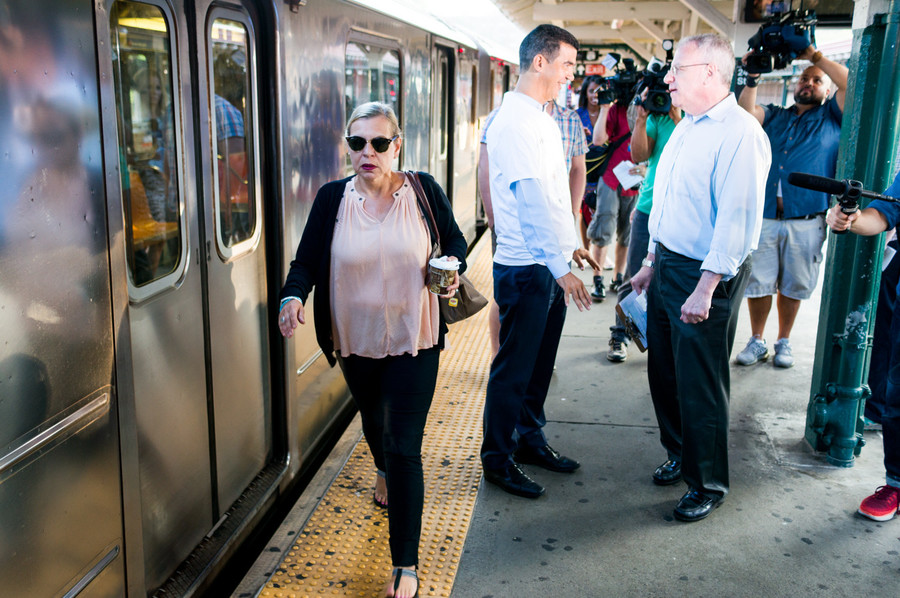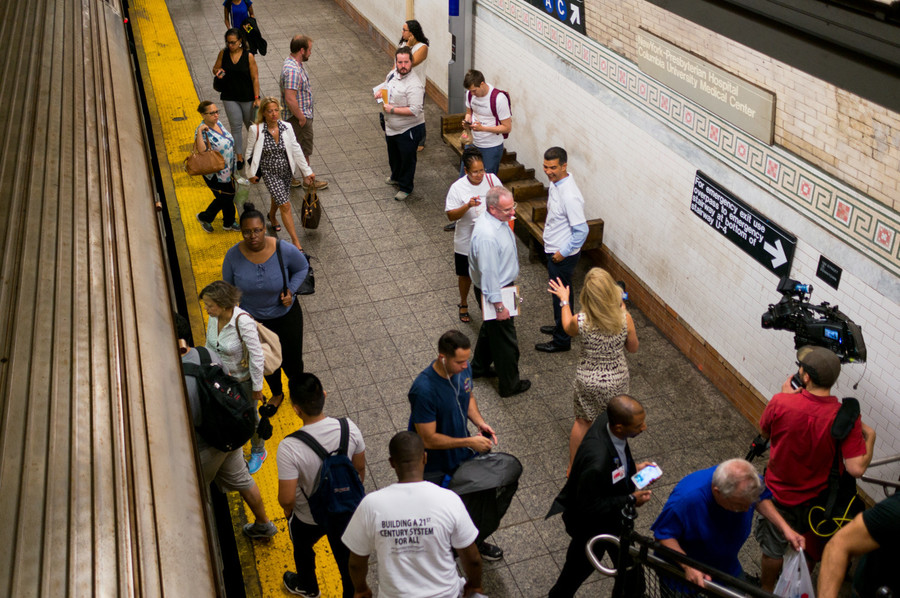Subway riders give pols an earful
Assemblyman and councilman rode the rails to hear riders’ complaints about deteriorating service on the city’s subways.
It seems like “it’s always something” slowing the subway trains down, Kingsbridge resident Louis Bailey said. Whether it’s a sick passenger, signal delays or even flooding — getting a train to run on time in out of Bailey’s part of the Bronx seems almost impossible most days.
“Transit is a mess, and it needs to get fixed,” said Bailey, a community organizer and outreach coordinator for the Manhattan-based nonprofit We Act for Environmental Justice, which also works on transit issues.
Bailey was one of many passengers who had a chance to share grievances last week with Assemblyman Jeffrey Dinowitz and Councilman Ydanis Rodriguez as they kicked off a 24-hour “Riders Respond Transit Tour.” There they asked passengers on the 1 train to share their commuting experiences.
The duo was then expected to share those stories at an Aug. 8 city council hearing on subways.
“I take the trains every day, and I feel their pain,” said Maria Lizardo, a volunteer tasked with capturing the riders’ stories. “They’re extremely crowded. Sometimes in the summer, you don’t even have (air-conditioning) in some of the cars, and so it’s really intolerable the experiences that you have.”
Lizardo, who lives in Yonkers, added she rode city trains for more than 30 years, and conditions have only gotten worse like the delays and overcrowding.
Although every day is not a bad commuting experience, Lizardo said the trains “don’t always come consistently, so it’s hard to measure when it’s time to leave in order to get to places on-time.”
“There are delays, but overall it’s pretty decent,” said Zane Phifer, who travels to take the 1 train from Westchester County. “It’s pretty much on-time.”
Phifer’s main concern, however, is with people who sleep in subway cars and leave food and trash behind.
“We are behind Hong Kong,” said Rodriguez, who represents the 10th council district, covering areas like Marble Hill and Inwood.
“We are behind London. We are behind Canada. We believe we can take this transportation system to be a 21st-century system, but we need to have a plan.”
Part of that plan must include the return of the commuter tax, Rodriguez said. That tax was a fee charged in the 1990s to people who work in the city, but don’t reside here.
But to resurrect that tax, Dinowitz would have to convince an Assembly (and ultimately a state senate) dominated by representatives from outside the city who are highly unlikely to push a tax on their own constituents.
If a commuter tax plan were approved, however, Rodriguez projected revenue could top $40 billion by 2030.
Dinowitz called for the state to take the lead and for the New York City to be a full participant to solve the transit problems and craft a plan that also produces ongoing revenue to fund all improvements.
Dinowitz also expanded his call for a further review to the city’s bus system, which especially impacts those living outside of Manhattan.
Northwest Bronx riders on lines like the Bx10 and Bx20 have advocated for additional buses citing widespread overcrowding and extended wait lines.
The tour took place last Thursday and Friday, traveling all five boroughs. Other stops included the West 168th Street station in Manhattan Grand Central Terminal, and the Jackson Heights and Roosevelt Avenue stops in Queens along the 7, E, F, M and R lines.
“Transit is for the people,” Bailey said. “And right now, the system is about at its breaking point.”









